First Impressions: Honor 20 Lite Review
First Impressions: Honor 20 Lite
A smart all-round budget buy, but it has one big problem

First Impressions
This would be a smart all-round budget buy were Honor not dealing with some serious political problems right now.
Key Specifications
- Review Price: £249.99
- 6.21-inch 2340 x 1080 pixel LCD screen
- Kirin 710 CPU
- 4GB RAM
- Android 9
- Magic UI
- 128GB storage
- 24/8/2MP rear cameras
- 32-megapixel selfie camera
What is the Honor 20 Lite?
The Honor 20 Lite is the low-cost version of the Honor 20.
If your budget would never stretch to flagship prices, there’s a more important comparison to make here. The Honor 20 Lite is also a slightly cheaper alternative to the Huawei P30 Lite.
This phone has a plastic back rather than a glass one, and less powerful cameras. Is it worth £250? Yes, but unless you’re very keen on the idea of an extra ultra-wide camera, the Moto G7 and Pocofone F1 may be better buys.
Related: Honor 20 Pro review
Honor and Huawei phones are also very difficult to recommend at present, thanks to the fog surrounding their future. Google has cut ties with Huawei (Honor’s “parent” or “sister” company), so this phone is unlikely to get upgrades, and whether it will function properly in 12 months’ time is in doubt.
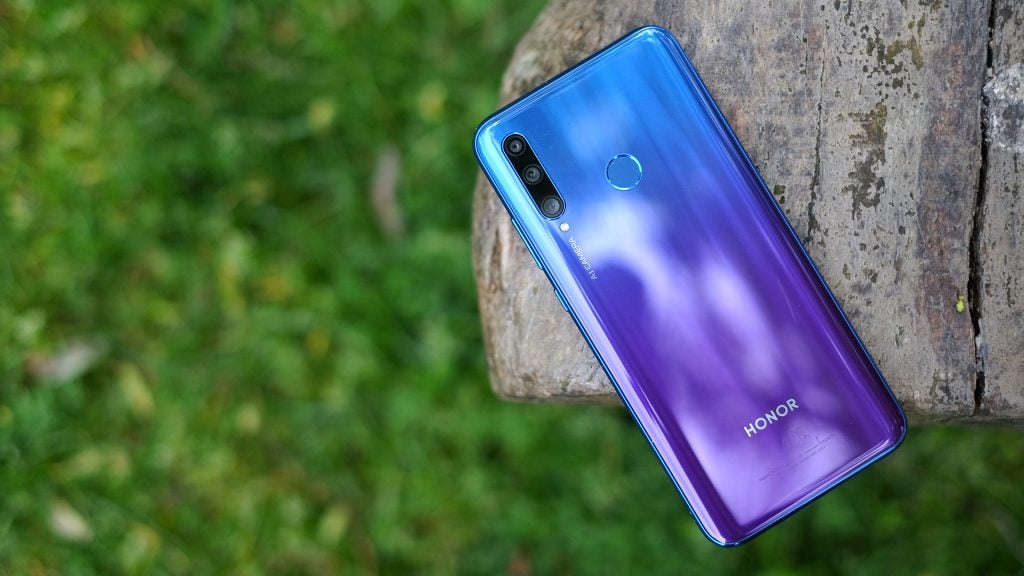
Honor 20 Lite — Design
If you don’t have much money to spend, you don’t have to make do with an all-plastic phone in 2019. The Motorola Moto G7 has a glass back and metal sides, and costs £220, for example. The Honor 20 Lite is not such a phone, however, it looks like one.
Its back has a smooth colour gradient, purple merging into blue. This is not the glass it appears to be. It’s plastic, and this is the key physical difference between the Honor 20 Lite and its glass and metal sister phone, the Huawei P30 Lite.

The Honor 20 Lite’s sides may be aluminium underneath, but are coated in a plastic-based colour layer.
It looks the part, but isn’t not quite as effective a high-end mimic as the P30 Lite. Its screen borders are also a wee bit larger. But just look at it. We’re not getting a bad deal at £250.
Several periphery parts of the hardware are great too. The Honor 20 Lite has a mammoth 128GB storage, a huge amount for a budget phone. Its rear fingerprint scanner is quick. And, one benefit of buying budget, it has a 3.5mm headphone jack so you don’t need to use an adapter or wireless headphones.

But why the microUSB charge socket, Honor? For a while this older charge standard, now usurped by USB-C, had been seen as acceptable in cheap phones. That time is now is coming to an end, and the Honor 20 Lite is affordable, but not a bargain basement phone.
Motorola uses USB-C at this price, so Honor doesn’t get let off.
Honor 20 Lite — Screen
The Honor 20 Lite has one of the most impressive-looking screens you’ll find at the price. But not because of the raw image quality.
Just look at the slim surrounds: they give the phone the air of a more expensive model. It makes the Google Pixel 3a seem a little dated, despite costing more than £100 extra.
The Honor 20 Lite also has a petite teardrop notch. These are fairly common. But this one is notably smaller and less distracting than the Moto G7’s.
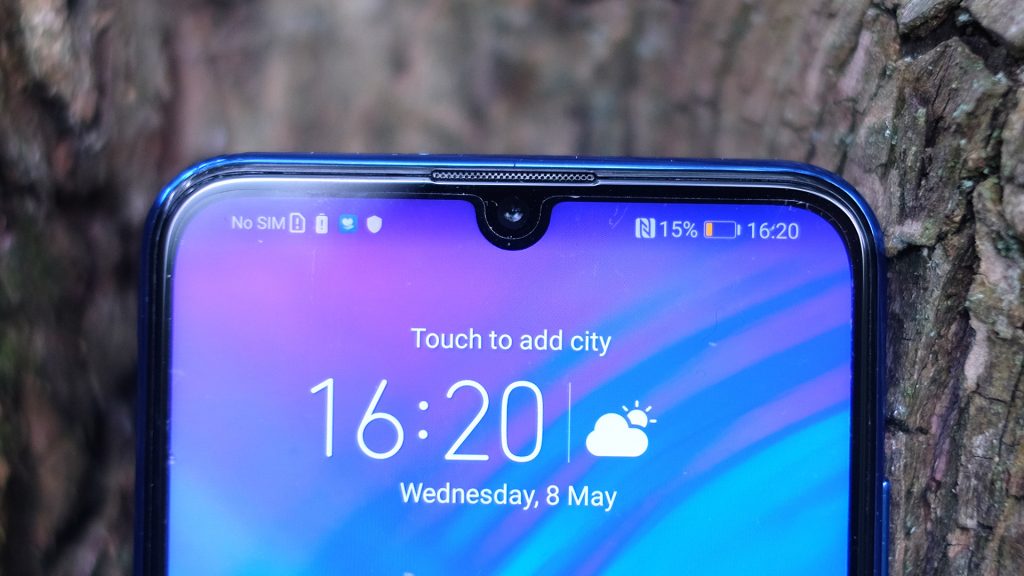
I tested it out against the Honor 20 Pro, to get a feel for the image quality on offer. What compromises are there?
Viewing angles are just as good. Top brightness is similar. Sharpness is comparable as they have the same resolution, 2340 x 1080 pixels. You really do get a pretty similar experience for less money.
There are slight differences, though. The Honor 20 Pro’s display image appears closer to the surface, giving it more immediate pop. Motion handling seems very slightly better in the Honor 20 Pro. Its whites are a little purer too, and colour calibration marginally better.

But there’s no real sense this is a less saturated screen. Use “standard” mode and you get a normal level of punchiness. “Vivid” mode offers OLED-style larger than life shades, even though this is an LCD screen.
In this particular Honor 20 Lite, it looks best on the “standard” colour mode with default colour temperature. You can warm it up, but it’s already pretty warm as-is.
This is a great screen for an affordable phone.
Honor 20 Lite — Software
The Honor 20 Lite has Magic UI software sitting on top of Android 9, which is effectively the same as the EMUI seen in Huawei phones.
This interface used to be pretty bad. Some say it still is bad. But I rather like it once a few tweaks have been made. Find the icons a bit garish? You can change them in the Themes app. There’s no app drawer, but you can add one in Settings.
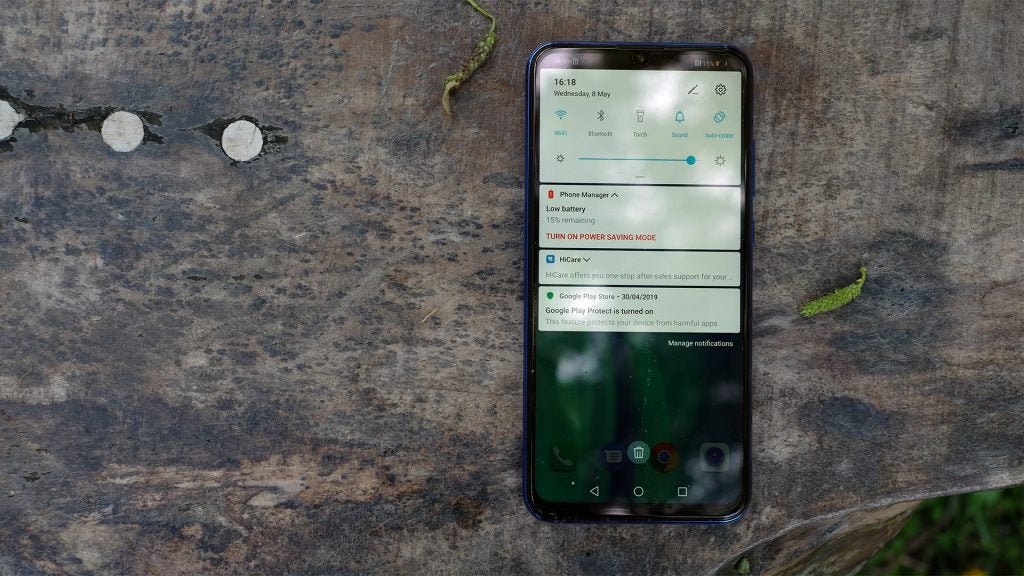
You end up with a scroll of apps, like a Pixel 3a, rather than the pages some rival phones still use. These little tweaks are worth investigating, as they fix the most common complaints levelled at the software of Honor and Huawei phones.
Comparing it to the slick Honor 20 Pro once again, there’s no major difference in performance either. The Honor 20 Lite is responsive and annoyance-free, just like a Moto G7.
Honor does add a couple of unwanted apps, mind. There are two extra stores, the Huawei AppGallery (Google Play, but worse) and the Honor Store, which reproduces the Honor webstore. Similarly, no-one asked for the booking.com app or an Amazon shortcut. But these are all part of Honor’s cost-saving strategy. It likely earns a few bucks for adding them.
The Honor 20 Lite also has the solid Huawei-made Health app, a fitness tracker, and Party Mode. This syncs multiple Honor phones’ speakers over Wi-Fi. It’s harmless, if silly.

Honor 20 Lite — Performance
The Honor 20 Lite’s general performance is perfectly sound. But raw power is actually one reason to consider the competition.
This phone has the HiSilicon 710 CPU. It’s a Huawei-made alternative to something like the Snapdragon 660, a mid-range processor.
Its CPU side impresses. There are four Cortex-A53 cores and four Cortex-A73 cores. Older affordable phones simply used four faster-clocked cores of the same type, but not here.
The Honor 20 Lite scores 5209 (1528 per core) points in Geekbench 4. It beats the Moto G7 by a few hundred points.
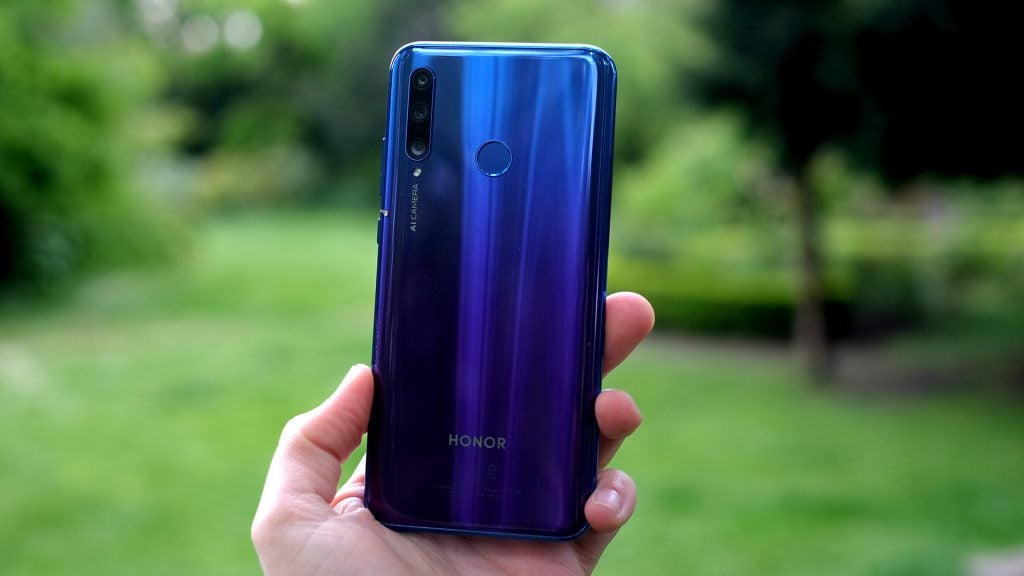
Its quad-core Mali G51 GPU also roughly matches the Moto G7 Plus too. However, gaming enthusiasts should also consider the Pocofone F1. It has a Snapdragon 845, 2018’s top Qualcomm phone CPU, which flattens the Honor 20 Lite for gaming power.
You can see the difference when you run demanding games like PUBG or Ark: Survival Evolved. PUBG will only run at Medium settings here. You need to keep Ark’s graphics sensibly restrained to make it run smoothly. A Pocofone F1 lets you max it out.
Most of us don’t need to lose our heads over this. Right now the Honor 20 Lite can play any Android game perfectly well. And the 128GB storage provides plenty of space for them.
Honor 20 Lite — Camera
The Moto G7 has a glass shell. The Pocofone has a better processor. Honor’s 20 Lite fires back with three rear cameras.
There’s a 24-megapixel f/1.8 primary, an 8-megapixel f/2.2 ultra-wide and a simple 2-megapixel depth assist camera. This is not the ToF (time-of-flight) style camera seen in the Honor View 20, just one to help out with the Honor 20 Lite’s Aperture and Portrait modes. These blur-out the background for a more dramatic look to your shots.
What’s missing? Any kind of zoom lens. I’d much rather have one than the depth camera, but a half-decent zoom would be more expensive to implement. So Honor didn’t.

Most phones at the price have dual lens arrays with a normal camera and a depth one. This is still an upgrade, if not the one you might have hoped for.
After taking the Honor 20 Lite out for a few photo excursions, I was very happy with its results. You get the dynamic range tweaking higher-end Huawei and Honor phones usually provide, it is quick to react and even indoors shots look fairly clear with a good level of contrast.
Its 24-megapixel images have less fine detail than the 12-megapixel images of the Honor 20 Pro. Wading around the pixels, fine textured are less well defined and confident. Guess what? A more expensive phone takes better images.
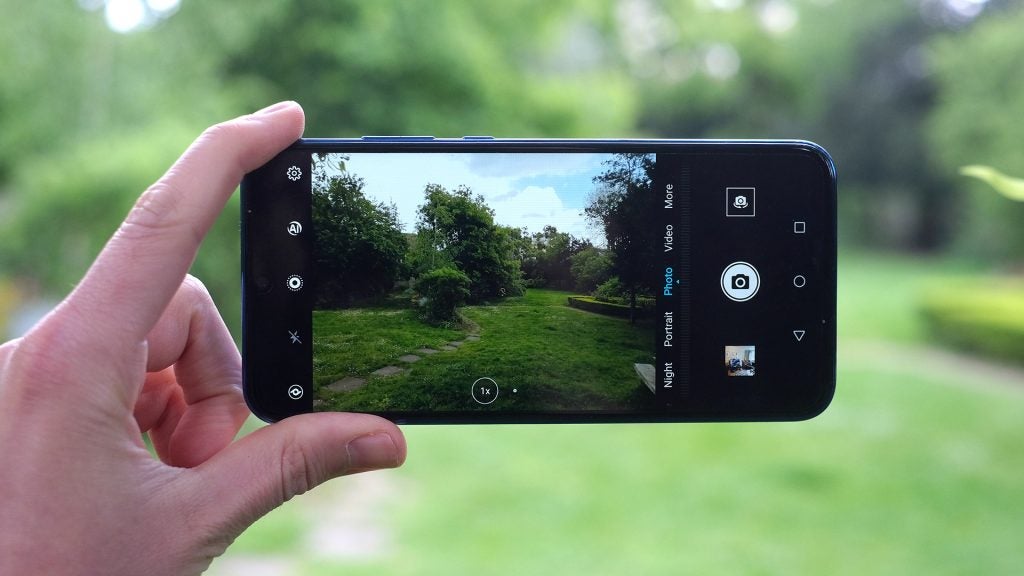
The Honor 20 Lite does have the night mode made famous by phones like the Huawei P20 Pro. This uses a barrage of exposures taken over 3-7 seconds (depending on light conditions) to take much brighter, clearer shots.
The images certainly are brighter, but image quality is not even close to the pricier Honor phones. Very dark images tend to look soft, and they miss out on the clever colour correction seen in higher-end models.
You will also want to avoid taking low-light images with the Honor 20 Lite’s wide camera. Such conditions show it uses a just-OK sensor. However, don’t undervalue the extra kinds of photos you can take with a wide. It is great for tight interiors or shooting up at big, old, grand-looking buildings.
The Honor 20 Lite’s background-blurring Aperture mode provides some extra creative control too. Its blur algorithms look great and mostly make up for the poor resolution of the depth sensor. But you will still see some areas where the depth map has gone off the rails.
Here are some samples:

The wide camera’s slight lack of punch reveals the modest hardware, but it’s fun to use

Another wide shot: note the vagueness of the detail in the foreground brickwork. However, dynamic range is good



Aperture mode is fun to play around with
There are no clever parts to the Honor 20 Lite’s video. It can’t shoot at 4K resolution. 1080p, 60 frames per second is the max.
The phone also offers no form of video stabilisation, which is bizarre and disappointing. Handheld footage will look juddery no matter the resolution you use. You can, however, take video using the wide camera, for an action cam-like view.
In some spots the Honor 20 Lite is better than the £250 average. In others it’s no better, or worse. But its 32-megapixel selfie camera is almost undeniably fabulous.
In good light it can pick out fine facial hair detail just as well as some phones several times the price. And its ability to hold onto that detail, and a bright image, even in very dim rooms is quite remarkable.
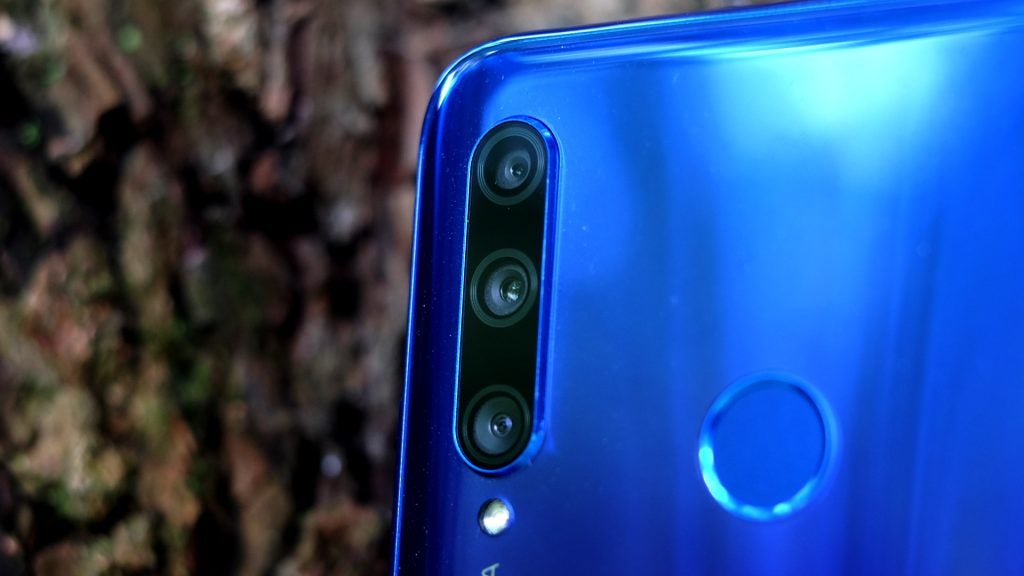
Honor 20 Lite — Battery Life
Honor often packs huge batteries into its phones. The Honor 20 Lite has a more conventional 3400mAh one.
This means it tends to last a full day with 30% or less charge by the time you go to bed, not two days. Its stamina is still perfectly acceptable.
An hour of streamed YouTube video at 50% brightness takes 10% off the charge level. 10 hours of video isn’t the sensational result you’ll see in some top-end Honor phones, but it’s solid.
The battery takes around two hours and 5-10 minutes to recharge. Again, this is not notable, but not embarrassing either. MicroUSB charging is slightly embarrassing at this point, though. The Honor 20 Lite should really have a USB-C port instead. It’s not 2017.
Should I buy the Honor 20 Lite?
The Honor 20 Lite is one of the funkiest-looking phones in its class. It has a classic Honor gradient finish, a very modern front-on appearance. And the triple camera array will make people guess you spent more.
Motorola’s Moto G7 feels more expensive, as its back is glass rather than metal. The Pocofone F1 has a lot more power. But here you get a bit of everything, including a brilliant 128GB storage.
A few parts seem half-baked, though. Video features are surprisingly poor, and the continued use of microUSB charging is odd and dated.
The real reason to hesitate is one that affects all Honor and Huawei phones right now. Huawei’s dispute with the US government affects Honor phones too, and means we don’t know if it’ll operate properly in the future, or receive updates.
Verdict
This would be a smart all-round budget buy were Honor not dealing with some serious political problems right now


